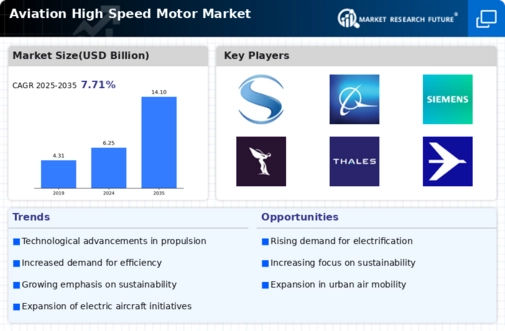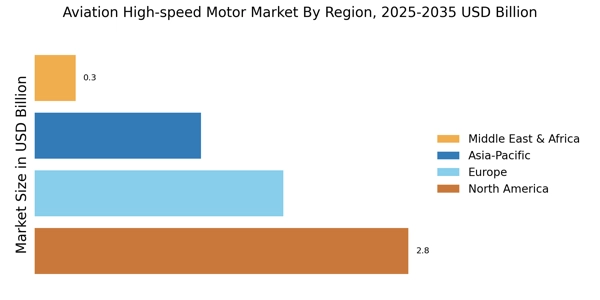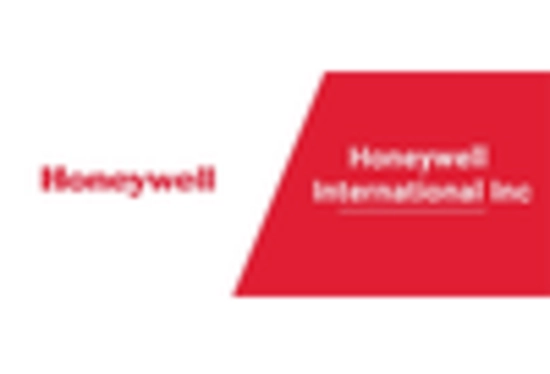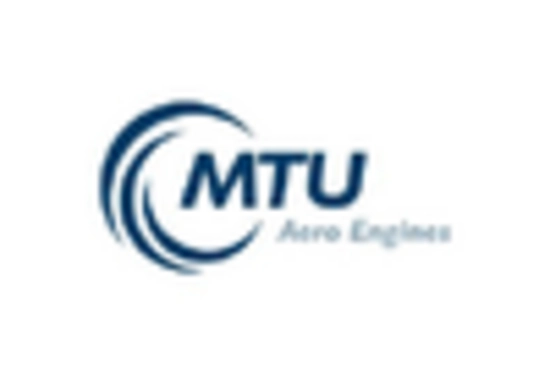Technological Innovations
The Aviation High-speed Motor Market is experiencing a surge in technological innovations that enhance performance and efficiency. Advancements in materials science, such as the development of lightweight composites and high-temperature superconductors, are enabling motors to operate at higher speeds and with greater reliability. These innovations are not only improving the overall efficiency of aircraft but also reducing operational costs. For instance, the integration of advanced control systems and digital technologies is facilitating real-time monitoring and predictive maintenance, which can significantly extend the lifespan of high-speed motors. As a result, manufacturers are increasingly investing in research and development to stay competitive in this rapidly evolving market.
Expansion of Urban Air Mobility
The Aviation High-speed Motor Market is poised for growth due to the expansion of urban air mobility (UAM) initiatives. As cities seek to alleviate congestion and improve transportation efficiency, the concept of UAM is gaining traction. This trend is leading to the development of vertical takeoff and landing (VTOL) aircraft, which rely heavily on high-speed motors for their operation. The potential for UAM to revolutionize urban transportation is attracting significant investment from both private and public sectors. As a result, the demand for advanced high-speed motors that can support these innovative aircraft designs is expected to rise, further driving the growth of the Aviation High-speed Motor Market.
Growing Investment in Aerospace R&D
The Aviation High-speed Motor Market is experiencing a surge in investment in aerospace research and development. This trend is largely driven by the increasing competition among manufacturers to develop cutting-edge technologies that enhance aircraft performance. Investments in R&D are focusing on improving the efficiency and reliability of high-speed motors, which are critical components in modern aircraft. As countries prioritize technological advancements in their aerospace sectors, funding for innovative projects is likely to increase. This influx of capital is expected to accelerate the development of next-generation high-speed motors, thereby propelling the growth of the Aviation High-speed Motor Market.
Regulatory Support for Clean Energy
The Aviation High-speed Motor Market is benefiting from increasing regulatory support aimed at promoting clean energy solutions in aviation. Governments worldwide are implementing stringent emissions regulations and providing incentives for the development of eco-friendly technologies. This regulatory landscape is encouraging manufacturers to innovate and invest in high-speed motors that comply with new standards. For example, initiatives such as the European Union's Green Deal are pushing for a reduction in carbon emissions from aviation, which is likely to drive demand for high-speed motors that can operate efficiently in electric and hybrid aircraft. Such regulatory frameworks are expected to shape the future of the Aviation High-speed Motor Market.
Increased Demand for Electric Aircraft
The Aviation High-speed Motor Market is witnessing a notable increase in demand for electric aircraft, driven by the need for sustainable aviation solutions. As environmental concerns become more pressing, airlines and manufacturers are exploring electric propulsion systems as a viable alternative to traditional jet engines. This shift is expected to create substantial opportunities for high-speed motor manufacturers, as electric aircraft require advanced motor technologies to achieve the necessary performance metrics. According to recent projections, the electric aircraft market is anticipated to grow significantly, potentially reaching a valuation of several billion dollars by the end of the decade, thereby bolstering the Aviation High-speed Motor Market.


















Leave a Comment